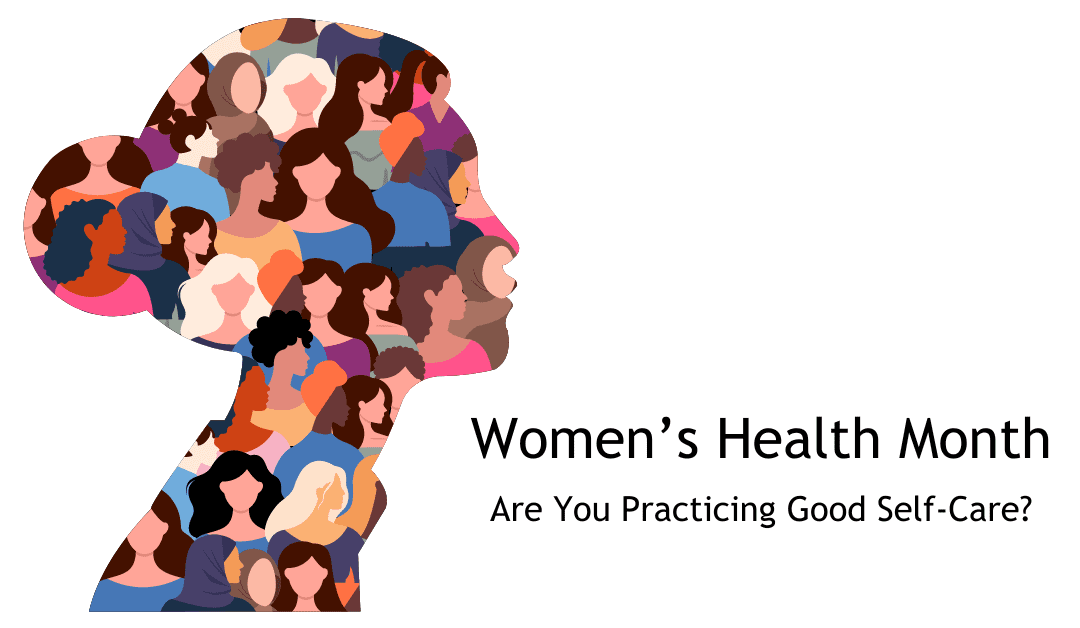
by Bag It Team | May 7, 2024 | Educational Articles
May marks Women’s Health Month, a time to raise awareness about the unique health needs of women. The demands of work and family, among other barriers, can greatly affect many women’s abilities to take care of their own health. This month’s spotlight on women serves as a gentle reminder for them to prioritize their own physical, mental, and emotional well-being.
Consider the “whole” you, with these practical tips: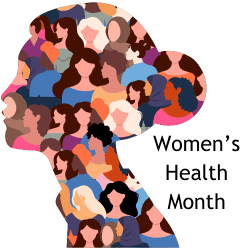
- Make good food and drink choices – avoid processed foods and sugar; focus on fruits, veggies, whole grains, lean protein
- Stay active – Exercise or do other physical activity you enjoy, and often
- Get preventive healthcare – have regular checkups and screenings recommended by your doctor
- Foster emotional well-being – cultivate resilience, practice self-care, nurture healthy relationships, and find balance in your daily life
Remember to “mind your mind” by tending to your mental health just as you would care for your physical health.
Research shows that maintaining a healthy lifestyle can help to lower your risk of many different health conditions, including cancer. Bag It Cancer recognizes the importance of having trustworthy resources specifically for women’s cancers. That’s why we collaborated with national women’s cancer nonprofits to create two Bag It Bags for metastatic breast and uterine cancers. Each bag has introductory information about these specific cancer types and the supportive resources offered by our partners. Order a Bag for yourself or a loved one.
Resources for Women’s Health
Know Your Rights: Reproductive Health Care from the Office on Women’s Health Women’s
Women’ Health from the Centers for Disease Control and Prevention (CDC)
National Institutes of Health (NIH) – Office of Research on Women’s Health

by Bag It Team | Apr 10, 2024 | Educational Articles
Diseñado específicamente para la comunidad Latina y sus familias que enfrentan cáncer, este Bolso es el resultado de dos décadas de experiencia y colaboración para mejorar el contenido del Bolso Bag It original en español.
 Reconociendo la profunda influencia de las creencias y los valores culturales durante el trayecto del cáncer, trabajamos estrechamente con miembros de la comunidad Latina que han tenido su propia experiencia con el cáncer: los sobrevivientes, los cuidadores, los proveedores de atención médica y otras personas que atienden a personas con cáncer. ¿El resultado? Un recurso único disponible tanto en español como en inglés, diseñado para cumplir con las necesidades de esta comunidad.
Reconociendo la profunda influencia de las creencias y los valores culturales durante el trayecto del cáncer, trabajamos estrechamente con miembros de la comunidad Latina que han tenido su propia experiencia con el cáncer: los sobrevivientes, los cuidadores, los proveedores de atención médica y otras personas que atienden a personas con cáncer. ¿El resultado? Un recurso único disponible tanto en español como en inglés, diseñado para cumplir con las necesidades de esta comunidad.
El Bolso Bicultural en Español le da prioridad a la participación familiar, reconociendo el importante papel que desempeñan las familias en las decisiones de tratamiento y cuidado. También se incluyen las necesidades de los niños, con orientación específica sobre cómo apoyarlos a través de una comunicación y comprensión apropiadas para su edad. Profundiza en cómo un diagnóstico de cáncer impacta la dinámica familiar, ofreciendo apoyo tanto a los pacientes como a quienes los rodean.
El Bolso Bag It sobresalta la importancia de mantener su atención médica preventiva y sus exámenes de detección del cáncer con regularidad. Analiza conceptos erróneos comunes sobre el cáncer, y al mismo tiempo proporciona información objetiva y confiable sobre los fundamentos del cáncer con el propósito de empoderar a las personas mientras navegan las aguas de su propia experiencia con el cáncer.
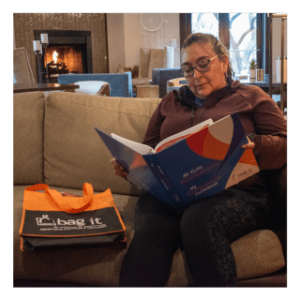 La comunicación efectiva es clave, por lo que el Bolso ofrece consejos y estrategias prácticas para fomentar el diálogo entre familiares y profesionales de la salud, incluida la búsqueda de apoyo de parte de trabajadores sociales, asesores espirituales y otras personas a medida que los individuos y quienes los rodean hacen frente a la experiencia del cáncer desde su punto de diagnóstico hasta el final en cada fase de la sobrevivencia. Esto incluye la importancia de utilizar intérpretes médicos, cuando corresponda, para garantizar que las personas sean escuchadas y comprendan la información que se les comunique.
La comunicación efectiva es clave, por lo que el Bolso ofrece consejos y estrategias prácticas para fomentar el diálogo entre familiares y profesionales de la salud, incluida la búsqueda de apoyo de parte de trabajadores sociales, asesores espirituales y otras personas a medida que los individuos y quienes los rodean hacen frente a la experiencia del cáncer desde su punto de diagnóstico hasta el final en cada fase de la sobrevivencia. Esto incluye la importancia de utilizar intérpretes médicos, cuando corresponda, para garantizar que las personas sean escuchadas y comprendan la información que se les comunique.
El Bolso de Bag It Cancer Bicultural en español es un recurso integral lleno de contenido y herramientas valiosos para empoderar a las personas y familias que enfrentan el cáncer. Proporcionar herramientas de organización e información confiable ayuda a que los pacientes obtengan una mayor sensación de control en su trayecto. La participación proactiva en su atención permite una mejor calidad de vida y resultados de salud.
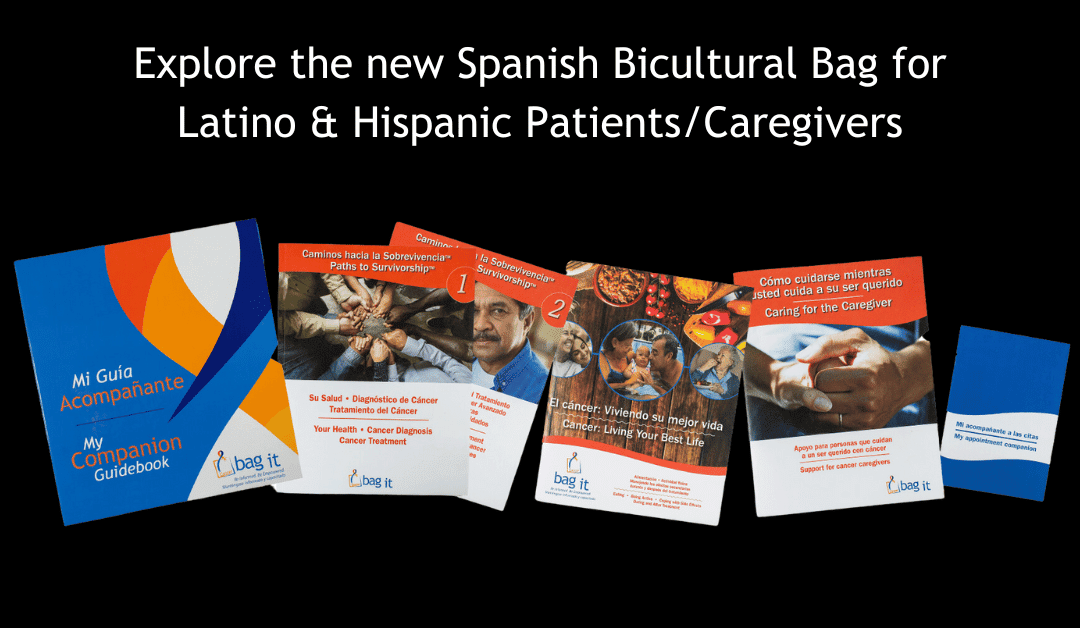
by Bag It Team | Apr 8, 2024 | Educational Articles
Crafted specifically for Latino and Hispanic individuals and their families facing cancer, this new Spanish Bicultural Bag It Bag is the result of two decades of experience and collaboration to enhance content in the original Spanish Bag It Bag.
 Recognizing the profound influence of cultural beliefs and values on the cancer journey, we worked closely with Latino and Hispanic individuals who have firsthand experience with cancer: survivors, caregivers, healthcare providers and others who serve people with cancer. The result? A unique resource available in both Spanish and English, tailored to meet the needs of these communities.
Recognizing the profound influence of cultural beliefs and values on the cancer journey, we worked closely with Latino and Hispanic individuals who have firsthand experience with cancer: survivors, caregivers, healthcare providers and others who serve people with cancer. The result? A unique resource available in both Spanish and English, tailored to meet the needs of these communities.
The Spanish Bicultural Bag prioritizes family involvement, acknowledging the significant role families play in treatment decisions and caregiving. Children’s needs are also addressed, with specific guidance on supporting them through age-appropriate communication and understanding. It delves into how a cancer diagnosis impacts family dynamics, offering support for both patients and those around them.
The Bag underscores the significance of maintaining regular, preventive healthcare and cancer screenings. It discusses common misconceptions about cancer while also providing reliable, factual information about cancer fundamentals to empower individuals as they navigate their unique cancer experience.
 Effective communication is key, so the Bag offers practical tips and strategies for fostering open dialogue among family members and healthcare professionals, including seeking support from social workers, spiritual advisors, and others as individuals and those around them navigate the cancer experience from diagnosis and through every phase of survivorship. This includes the importance of using medical interpreters, where applicable, to ensure individuals that their voices are heard, and they understand the information being relayed to them.
Effective communication is key, so the Bag offers practical tips and strategies for fostering open dialogue among family members and healthcare professionals, including seeking support from social workers, spiritual advisors, and others as individuals and those around them navigate the cancer experience from diagnosis and through every phase of survivorship. This includes the importance of using medical interpreters, where applicable, to ensure individuals that their voices are heard, and they understand the information being relayed to them.
Bag It Cancer’s Spanish Bicultural Bag is a comprehensive resource filled with valuable content and tools to empower individuals and families coping with cancer. Providing organizational tools and reliable information helps patients gain a greater sense of control over their journey. Proactive participation in their care allows for better quality of life and health outcomes.
Read more about this new Spanish Bicultural Bag in Spanish.
Read more about this new Spanish Bicultural Bag in English.
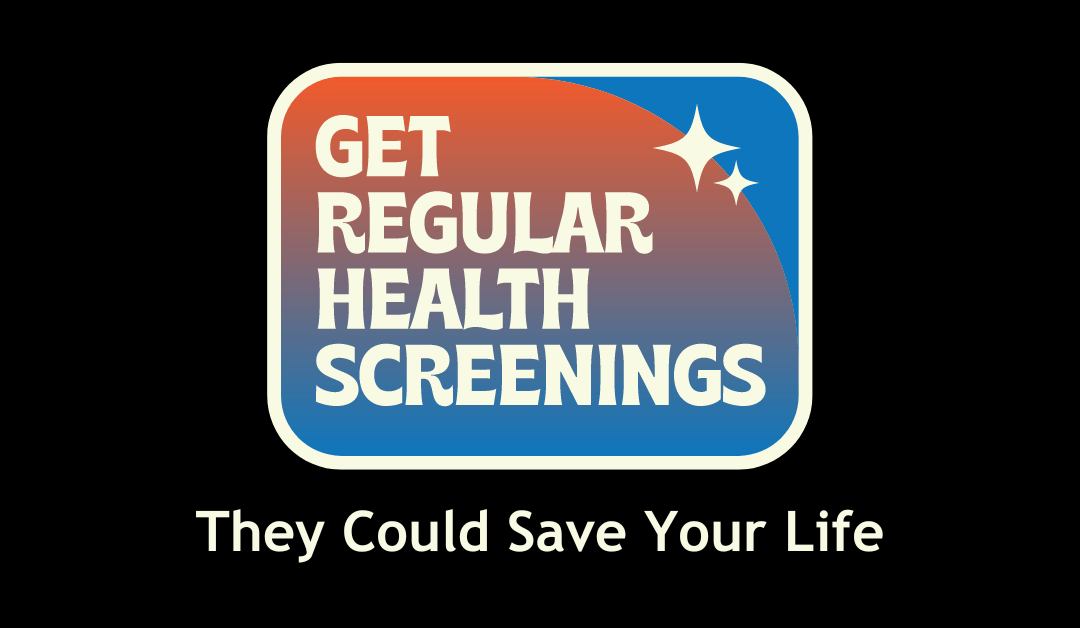
by Bag It Team | Feb 10, 2024 | Educational Articles
Many of us know that making healthy lifestyle choices and getting recommended vaccines can help lower the risk or EVEN prevent some kinds of cancer.
Cancer screenings, which are also cancer prevention strategies, check your body for cancer, even if you have no signs or symptoms. There are different kinds of screenings including:
- A physical exam and personal history
- Lab tests
- Imaging tests
- Genetic tests (these tests look for changes in the genes that may indicate that a person has or is at risk of having a particular disease or condition).

Routine screening tests can help to find breast, cervical, colorectal (colon), and other cancers early, when they may be easier to treat or cure. Many expert organizations provide guidelines for different screenings, but it’s important to talk with your doctor about your personal situation. There are benefits and risks for most screenings, and certain tests may be recommended only for people who are considered high risk for a particular cancer. Together you and your healthcare provider can decide which screenings are appropriate for you.
Remember! When your doctor recommends a screening test for you, it does not necessarily mean they believe you have cancer. Screening tests are used in people with average risk and no symptoms of cancer. Usually these tests, if abnormal, require additional testing to definitively diagnose cancer. If you have symptoms or increased risk based on your personal or family history, you may need to start screening at an earlier age than is typically recommended or may need specialized testing.
Questions to ask your doctor about cancer screenings
- Are any cancer screening tests recommended for me? Which ones?
- Can we talk about the test’s potential risks compared to its benefits?
- When should I start getting cancer screenings? And how often?
- What is the purpose of the test?
- What happens during the test?
- How long does it take to get test results?
- What happens if the results are not normal?
Screening & Prevention Resources
Centers for Disease Prevention & Control, How to Prevent Cancer or Find It Early: Screening
National Cancer Institute, Cancer Screening
Prevent Cancer Foundation, Cancer Screenings and Prevention
American Cancer Society, hundreds of articles on screening and prevention

by Bag It Team | Jan 5, 2024 | Educational Articles
As we start the new year, let’s not just think about resolutions as a list. Identifying both goals and intentions will make for a happier and healthier you.
Goals are specific targets, such as finishing a fitness challenge or learning something new. They give you a plan and a good feeling when you achieve them.
Intentions are more about how you want to live your life. It’s like deciding to be positive, enjoy each day, or take care of yourself.
Paired, they give you the why and the how for living a more intentional life.
What to Think About for 2024
Goals: Think about what you want to achieve, like getting healthier, doing well at work, or spending more time with loved ones. Make sure your goals are doable and break them into smaller steps.
Intentions: Consider how you want to approach the year. Maybe focus on staying cheerful, being present in daily activities, or finding balance in your life.
For someone dealing with cancer, goals might be about finishing treatment, managing symptoms or learning about their cancer. Intentions could include prioritizing self-care and doing things that make them happy.
In cancer support, things like Bag It Cancer can help. The Bag It Cancer Bag gives tools and information for goals, and it also shows support and helps with feelings—a bit like a friendly companion.
Balancing goals and intentions is like having a plan and a positive mindset, making life better overall. It’s a great way to start the new year with a focus on feeling good and growing.
Resource To Help You Get Started
Read this article on self-awareness and setting intentions from Psychology Today.

by Bag It Team | Dec 9, 2023 | Educational Articles
As 2023 draws to a close, let’s pause to reflect on our individual journeys. Recognizing our personal challenges and successes is a crucial step towards nurturing our mental well-being.
The Value of Reflection
Taking a moment to think allows us to acknowledge our growth, fostering a sense of achievement and strength within ourselves.
Caring for Mental Health
The holiday season can be tricky, reflection serves as a powerful self-care tool, promoting mental wellness by validating our emotions.
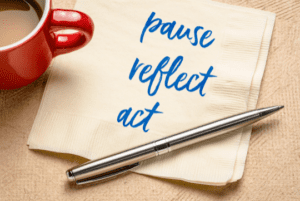
Looking Ahead
Consider setting intentions for the coming year, focusing on your emotional well-being and identifying ways to support yourself.
Practical Steps
Journaling: Reflect on daily experiences.
Mindfulness: Practice techniques for calmness.
Gratitude: List three things you’re grateful for each day.
Community Connection: Share your reflections with others for mutual support and encouragement.
A Season of Reflection
As we get ready for a new year, let’s find strength in our personal experiences and look towards a hopeful tomorrow.
Resources to ease your next steps.
Wishing you a season of reflection, peace, and personal growth.




 Reconociendo la profunda influencia de las creencias y los valores culturales durante el trayecto del cáncer, trabajamos estrechamente con miembros de la comunidad Latina que han tenido su propia experiencia con el cáncer: los sobrevivientes, los cuidadores, los proveedores de atención médica y otras personas que atienden a personas con cáncer. ¿El resultado? Un recurso único disponible tanto en español como en inglés, diseñado para cumplir con las necesidades de esta comunidad.
Reconociendo la profunda influencia de las creencias y los valores culturales durante el trayecto del cáncer, trabajamos estrechamente con miembros de la comunidad Latina que han tenido su propia experiencia con el cáncer: los sobrevivientes, los cuidadores, los proveedores de atención médica y otras personas que atienden a personas con cáncer. ¿El resultado? Un recurso único disponible tanto en español como en inglés, diseñado para cumplir con las necesidades de esta comunidad. La comunicación efectiva es clave, por lo que el Bolso ofrece consejos y estrategias prácticas para fomentar el diálogo entre familiares y profesionales de la salud, incluida la búsqueda de apoyo de parte de trabajadores sociales, asesores espirituales y otras personas a medida que los individuos y quienes los rodean hacen frente a la experiencia del cáncer desde su punto de diagnóstico hasta el final en cada fase de la sobrevivencia. Esto incluye la importancia de utilizar intérpretes médicos, cuando corresponda, para garantizar que las personas sean escuchadas y comprendan la información que se les comunique.
La comunicación efectiva es clave, por lo que el Bolso ofrece consejos y estrategias prácticas para fomentar el diálogo entre familiares y profesionales de la salud, incluida la búsqueda de apoyo de parte de trabajadores sociales, asesores espirituales y otras personas a medida que los individuos y quienes los rodean hacen frente a la experiencia del cáncer desde su punto de diagnóstico hasta el final en cada fase de la sobrevivencia. Esto incluye la importancia de utilizar intérpretes médicos, cuando corresponda, para garantizar que las personas sean escuchadas y comprendan la información que se les comunique.







Recent Comments